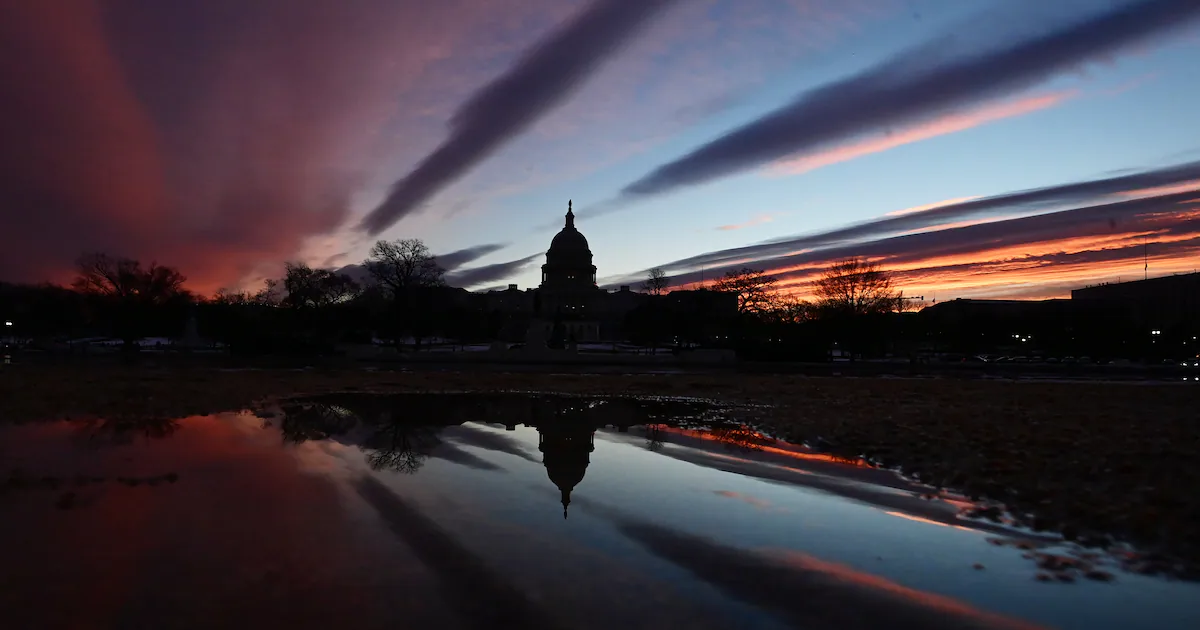Copyright Anchorage Daily News

When Donald Trump vowed last year to end America’s semiannual clock changes, pledging the Republican Party would finally resolve the issue, combatants in the years-long fight over daylight saving time thought their future was bright. But the difficult politics of the matter have proved too much for Trump and his allies to overcome, culminating in a showdown on the Senate floor Tuesday that pitted Republican against Republican and left the movement’s future prospects cloudy. “The American people are sick and tired of changing their clocks twice a year,” said Sen. Rick Scott (R-Florida), the lead sponsor of the bipartisan Sunshine Protection Act, which would end the clock-changes by allowing states to adopt year-round daylight saving time. “With President Trump committed to finally lock the clock, we can finally get this done.” “Not every human problem has a legislative solution,” countered Sen. Tom Cotton (R-Arkansas), blocking Scott’s effort and arguing that Americans would need to live “with an uneasy compromise” and accept the regular clock changes. Lawmakers have spent decades arguing over daylight saving time - whether it’s helpful or harmful, how long it should last and whether the nation should be changing its clocks at all. An earlier version of the Sunshine Protection Act surprisingly passed the Senate in 2022 before stalling in the House, where representatives said they were overwhelmed by the intense, dueling arguments over what to do next. Cotton took credit this week for helping stymie that bill, too. The responsibility of changing the nation’s time code rests with Congress, meaning that Trump cannot simply issue an executive order. Nineteen states have also approved measures that would allow them to adopt year-round daylight saving time if Congress passed a bill making it permanent nationwide, according to the National Conference of State Legislatures. Proponents of daylight saving time argue that the century-old system remains the best way to maximize Americans’ sunshine during the workday, by shifting clocks as the seasons change. They also point to lawmakers’ failed effort to end the clock changes in the 1970s by adopting permanent daylight saving time. The move almost immediately backfired amid widespread reports of children waiting in the dark for school buses to arrive, anecdotes about car accidents and other frustrations. Congress rolled back the change after 10 months. Health experts have countered that the time changes are linked with drowsy behavior linked to motor-vehicle accidents and workplace injuries, elevated risk of heart attack and other potential hazards. The public has long wanted to end the time changes, polls show. Just 12 percent of Americans favor the current system, according to an AP/NORC poll released Thursday. Another 47 percent oppose it, and the remainder said they were neither opposed or in favor. But there’s little consensus on what to adopt instead. Fifty-six percent of Americans say they would prefer year-round daylight saving time, with more light in the evening and less in the morning, while 42 percent want year-round standard time, with more light in the morning and less at night, AP/NORC found. The issue has unusual politics, with lawmakers often bound together by geography rather than ideology. States are required to observe daylight saving time, “springing forward” in March and “falling back” in November, although Hawaii and part of Arizona have opted out and follow year-round standard time. Politicians from the coasts have generally pushed for year-round daylight saving time, given that their time zones would allow them to enjoy longer, sunnier days. Conservative senators from the south, such as then-congressman Marco Rubio (R-Florida) and Sen. Tommy Tuberville (R-Alabama), have joined liberal stalwarts such as Sens. Patty Murray (D-Washington) and Edward J. Markey (D-Massachusetts), to lobby for the Sunshine Protection Act. But lawmakers from the middle of the country have argued that they stand to lose sunlight: year-round daylight saving time would lead to sunrises that start after 9 a.m. in cities such as Indianapolis and Detroit. Advocates such as the American Academy of Sleep Medicine have also warned that year-round daylight saving time would be unhealthy, citing risks such as higher rates of obesity or metabolic dysfunction, and argued that year-round standard time is the healthier option. There appeared to be new momentum to tackle daylight saving time when Trump turned his attention to the matter after securing reelection. His vague online post - where he dismissed the clock changes as “inconvenient, and very costly to our nation,” and said that daylight saving time “has a small but strong constituency” - gave hope to advocates on both sides of the issue, seeking to sway the incoming president to their way of thinking. Elon Musk and Vivek Ramaswamy, who Trump tapped to lead his Department of Government Efficiency, or DOGE, mocked the concept of daylight saving time and pledged to end it, although it was not clear if they were serious. But Trump told reporters earlier this year that while he supported year-round daylight saving time, he had discovered - like so many politicians before him - that it was a “50-50 issue” with unclear political prospects, and no consensus on what to do next. “This should be the easiest one of all … but a lot of people like it one way, a lot of people like it the other way, it’s very even,” the president said in March. He soon called on Congress to take up the legislation. “The House and Senate should push hard for more Daylight at the end of a day. Very popular and, most importantly, no more changing of the clocks, a big inconvenience and, for our government, A VERY COSTLY EVENT!!!” Trump wrote on Truth Social in April. Congress initially appeared receptive to Trump’s entreaties, with Sen. Ted Cruz (R-Texas), who chairs the Senate Commerce Committee, holding an April hearing to review the Sunshine Protection Act. The committee later that month voted to advance the bill - the first time the legislation would have ever advanced out of committee since its 2018 introduction - but not enough senators were physically present for the vote to be officially recorded. A spokesperson for Cruz said there no immediate plans to revisit the issue. The House Energy and Commerce Committee had also planned to examine the debate over daylight saving time this fall, but those efforts are on hold because of the government shutdown, said Matt VanHyfte, a committee spokesman. Scott and his allies this week tried a different tactic: to seek unanimous consent on their bill, which eliminates the need for debate or an actual vote count if no senator objects to a measure. The strategy had worked in 2022, allowing the Sunshine Protection Act to swiftly pass the chamber - to the surprise of some lawmakers who said they hadn’t realized the bill was up for a vote. But this time, the maneuver was stymied by Cotton, who said he regretted not blocking it three years ago and had worked with the House to kill the bill later in 2022. “Unless we’re willing to adopt permanent standard time and sacrifice the extra hour of evening light in the spring and summer for Little League ballgames and summer vacations across the country, there’s not much to be done,” Cotton said Tuesday. The White House didn’t respond to questions Thursday about the bill’s defeat. But Scott said Thursday that he was undeterred, arguing that Trump’s support would help him win over wary senators. “I’m going to keep working,” he told The Washington Post. Some Democrats are keen to join him. “I don’t always agree with President Trump,” Sen. Sheldon Whitehouse (D-Rhode Island) said on the Senate floor Tuesday, endorsing the Sunshine Protection Act. “But I sure do agree about this.”



